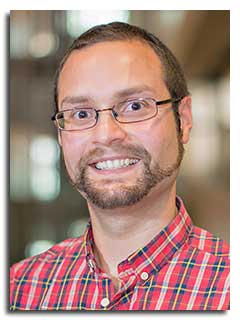
Abstract
This talk addresses two principally different concepts to reduce some of the losses of conventional single junction solar cells: (1) reduction of parasitic absorption in non-ideal contact layers, and (2) minimizing thermalization losses.
In the first part I will discuss how in conventional Si heterojunction cells the parasitic absorption in the thin amorphous layers at the front side can be reduced by implementing a wider band gap material such as a-SiOx. Unfortunately, with increasing band gap of the contact layer the valence band offset to c-Si increases as well, causing problems in hole transport. To mitigate this, we introduce a “staircase” concept which is more tolerant for band offsets.
In the second part I will present a promising hybrid approach, which has the potential to minimize thermalization losses and could therefore theoretically enhance single junction Si device efficiency up to 40 %. The aim is to design a multiple-exciton generating device implemented on conventional c-Si absorbers using singlet fission (SF) in organic tetracene layers to generate bi-triplet excitons. First results of a working hybrid device are presented and discussed. We will address the fundamental question, if the dissociation of geminate triplet excitons generated by SF in the organic layer and transfer across the hybrid interface into c-Si is possible.
Click here to see all available video seminars.
Click here to go to the SPREE HOMEPAGE.
Brief Bio
Martin Liebhaber works on solid state and semiconductor physics and advanced analytics of surfaces and buried interfaces. His current work comprises the preparation and characterization of charge carrier selective hetero contacts on crystalline silicon such as conventional amorphous/crystalline silicon interfaces and hybrid organic/inorganic heterojunctions. Within a joint DAAD research co-operation, he will collaborate with UNSW, working on a multi-exciton generating hybrid device concept.
Since 2013 Martin is a PhD student at Helmholtz Center Berlin (Germany), he received a master degree in physics from the University of Würzburg (Germany) in 2013 and a master degree in optoelectronics and lasers from Heriot-Watt University Edinburgh (Great Britain) in 2011. In his spare time Martin is an active hiker, rock climber and sailor.
